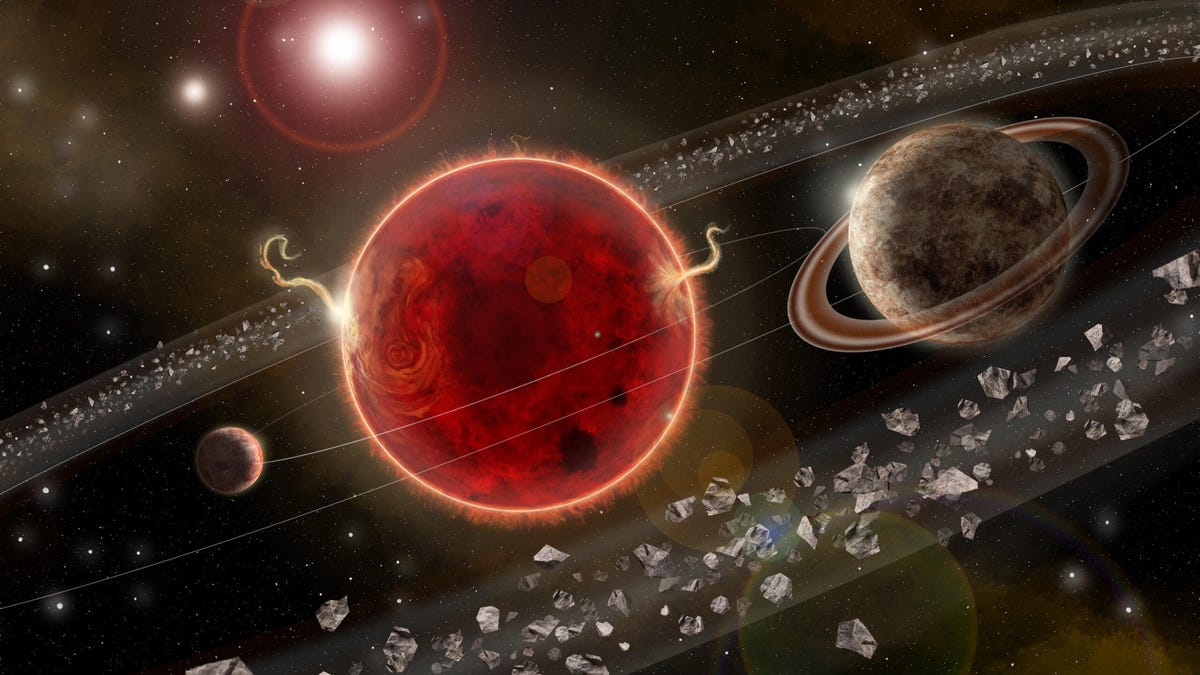Neighboring star Proxima Centauri may be hosting a second planet
An exoplanet couldn't get any closer, and now it looks like there could be a pair just around the cosmic corner.

This illustration shows what the Proxima Centauri system might look like, with the red dwarf star and its two planets, and the binary star Alpha Centauri in the background.
The closer scientists look, the more interesting Proxima Centauri gets. It's always going to call to us simply because it's the next star system beyond our own, at just over four light-years away. In 2016, the Earth-like planet Proxima b was discovered in its habitable zone. And now, it looks to have a bigger companion as well.
Newfound Proxima c is almost certainly a more harsh world, orbiting further out from Proxima Centauri, which puts out only a fraction of the energy of our sun.
"It's like a low-energy lightbulb or something like that in terms of the output," says Hugh Jones, professor of astrophysics at the University of Hertfordshire, in the below video shared on Facebook. Proxima c "is a rather cold and faint thing in itself."
Proxima C DiscoveryOne of our incredible Astrophysicists at Herts, Professor Hugh Jones, was part of the team that has discovered what they believe to be a second planet orbiting the star closest to our Solar System! Professor Jones gives us an insight into this amazing discovery: https://www.herts.ac.uk/about-us/news/2020/discovery-of-second-planet-orbiting-the-star-closest-to-our-solar-system
Posted by University of Hertfordshire on Thursday, January 16, 2020
Jones is part of an international team that's been searching for signs of planets in observations of Proxima Centauri for two decades.
It's been an open secret for the past several months that astronomers had compelling evidence for the existence of a Proxima c, with the team's leaders discussing it on stage at events like Breakthrough Discuss 2019. While we still can't say for certain that a second planet is actually there, a peer-reviewed study laying out all the evidence for the candidate planet, as astronomers call it, has finally been published in Science Advances.
It describes a world somewhere between the size of Earth and Neptune, what's often referred to as a super-Earth, but orbiting far beyond the so-called snow line of the star system, making it a cold and icy Hoth-like place where any alien life-forms would have it rough.
Far warmer Proxima b might come with its own set of challenges, like powerful solar flares observed coming off Proxima Centauri that could frequently irradiate the planet.
The team hopes that future telescopes will be able to confirm the existence of the new candidate planet. Better yet, Jones sees it as the ideal place to send robots in a generation or two.
"This will be the greatest opportunity to actually study in detail another planet outside of our own solar system," he says.

